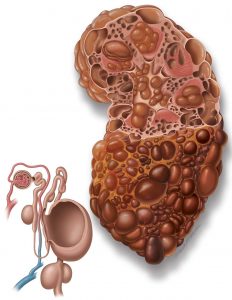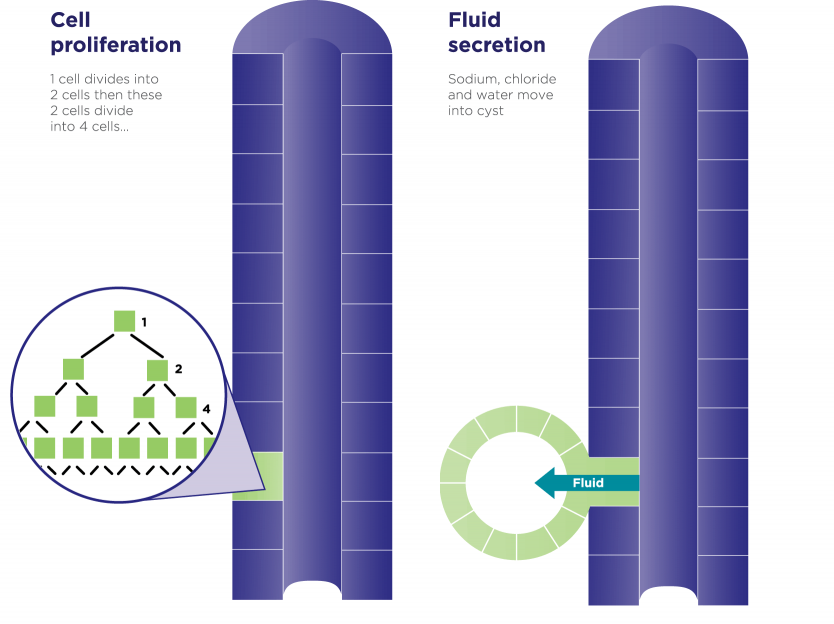What are cysts?
 A cyst in the kidney begins as an outpouching of the nephron, similar to a blister, and can occur any where along the length of the nephron. The fluid inside the cysts often reflects the area in the nephron that the cyst began.
A cyst in the kidney begins as an outpouching of the nephron, similar to a blister, and can occur any where along the length of the nephron. The fluid inside the cysts often reflects the area in the nephron that the cyst began.
Approximately 70 percent of cysts detach from the nephron once they reach 2 mm (1/8 inch) in diameter. Over time, the cysts enlarge and can become filled with clear fluid or blood. Cysts can also form in other organs, with the liver being the most common site. Liver cysts are derived from the bile ducts or tubules.
What causes cysts to form?
Mutations of the PKD1 or PKD2 gene reduce the normal level of polycystins, which regulate many important tubular cell functions. Abnormalities in multiple cell signaling pathways have been found in PKD, but one that seems to be central to the disease is a defect in a signaling molecule called cyclic AMP (cAMP) within the cells that form tubules in the kidneys and other target organs. These abnormalities in turn can lead to cyst formation through at least two important mechanisms:
- Cell proliferation (growth) — The cells lining a cyst reproduce themselves more than normal kidney cells do, making them grow in size. This process is essential to growth and replacement of the old cells.
- Fluid secretion — The lining cells secrete fluid into the empty sac which expands the cyst. Without fluid secretion a cyst would collapse like a deflated balloon.


Get the latest information on treating PKD.







